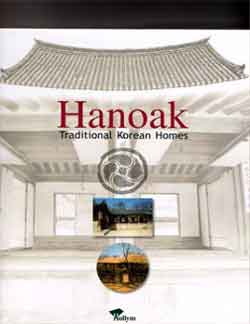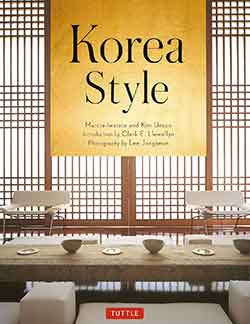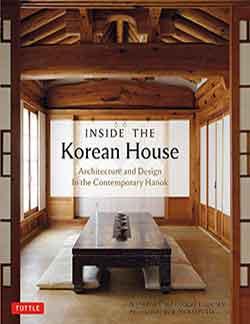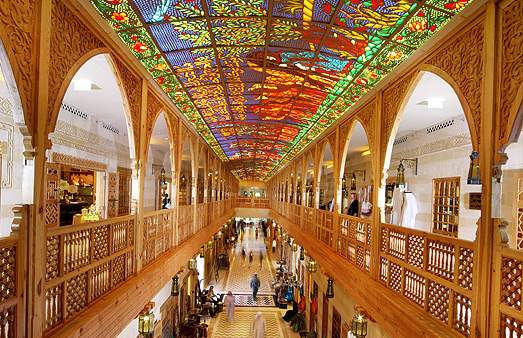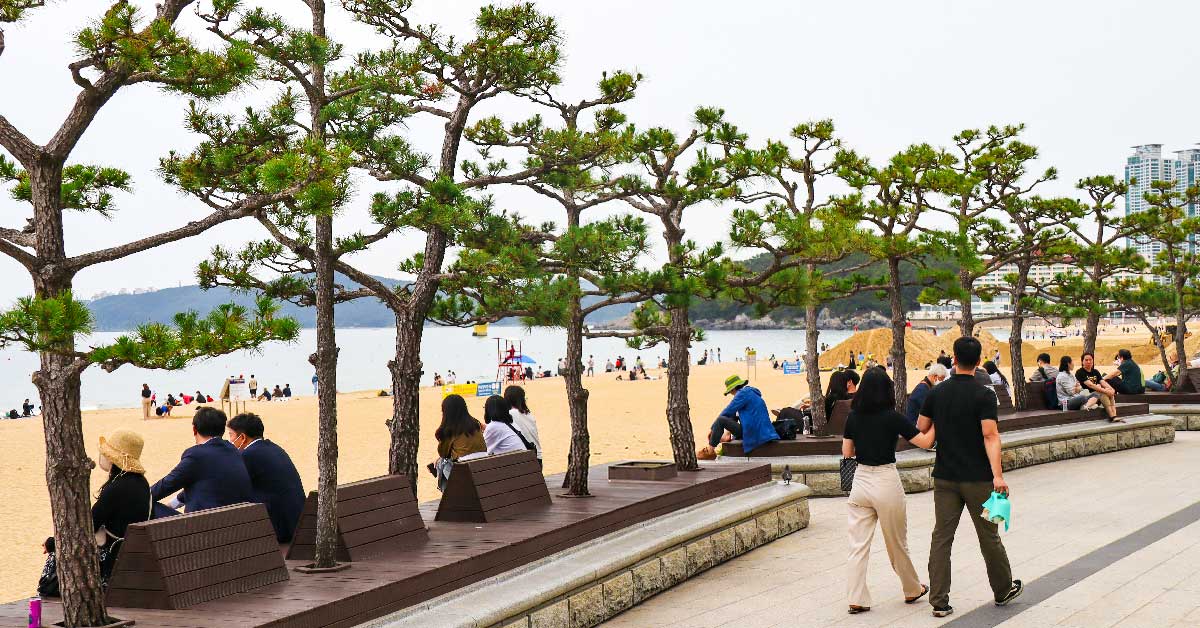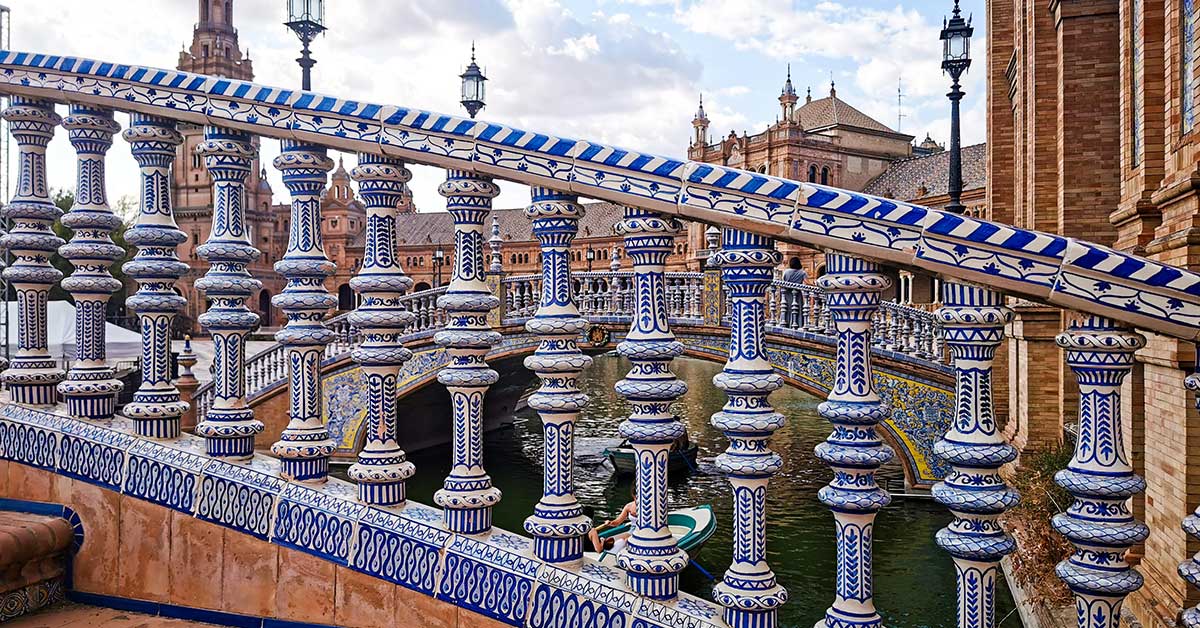Best Hanok Villages in South Korea: A Traveler’s Guide to Joseon’s Traditional Homes & Culture
Exploring South Korea’s heart through its most beautiful Hanok villages! Learn about what a hanok village is and its ancient design, read about the best hanok village in Seoul (and outside Seoul) to visit, plus tips & tricks on how to get the best out of spending time inside timeless Korean home enclaves where traditional architecture from the Joseon era meets cultural charm. And sometimes modernity.
Even though time travel seems impossible, South Korea makes things so easy with its stunning ancient communities, Hanok villages in Seoul and throughout the country, touchable realities of the dreamy historical dramas.
When taking the old pathways lined with earthen walls, time-machine corridors, you’re taken deeper and deeper into the heart of the Korean living style. Here, old houses, secret gardens, and pavilions made of wood and stone feel like perfectly peaceful retreats. People whisper and giggle, read, or simply contemplate the sky in the shadow of gracefully curved roofs, while sunlight plays out through the delicate paper windows. What’s more charming is that some of the visitors are even wearing a hanbok, recreating a bygone era.
I fell in love with EACH AND EVERY Hanok village that I visited.
Disclosure: This article contains affiliate links. If you make a purchase after clicking one of these links, I earn a small commission from that website at no extra cost to you. Learn more: Disclosure policy.
 What Is a Hanok Village?
What Is a Hanok Village?
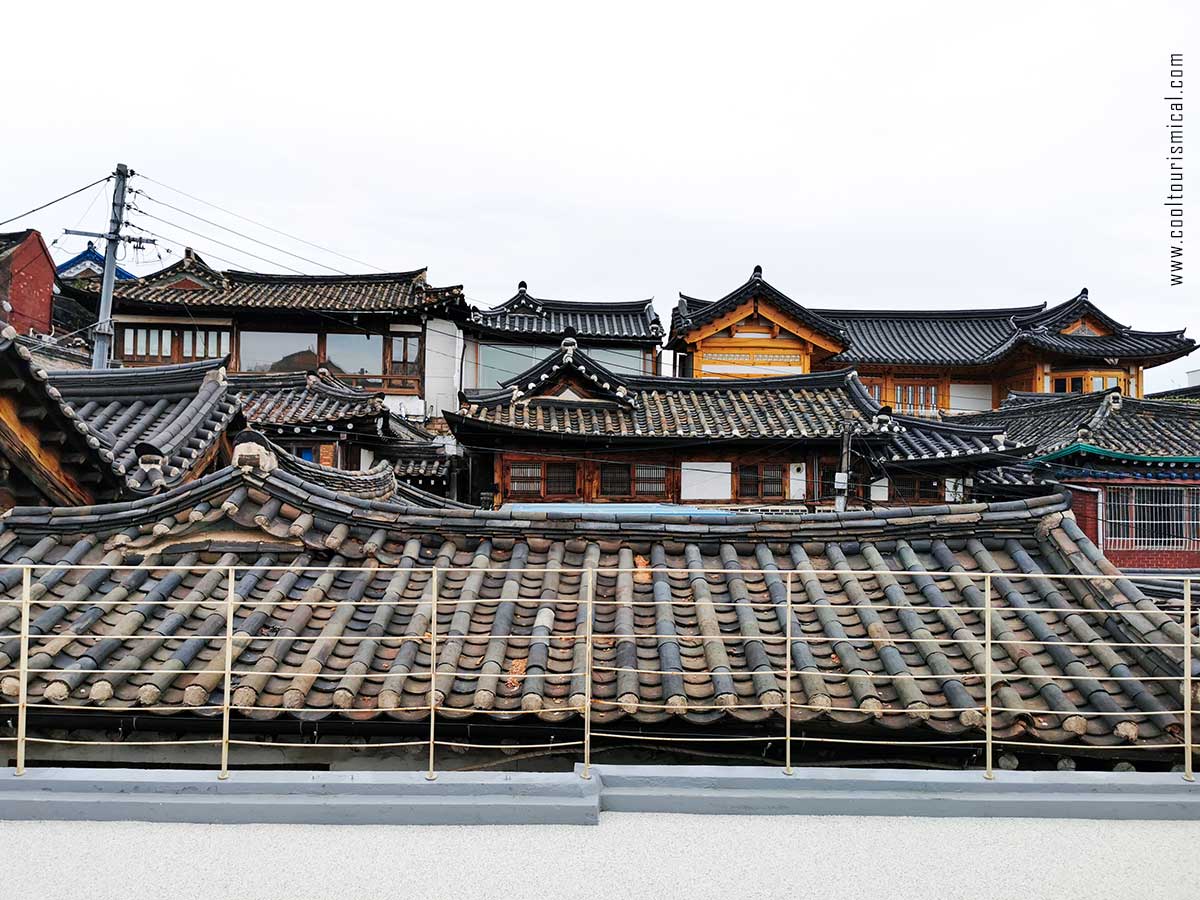
Bukchon Hanok Village viewed from Greenmile Cafe rooftop, Copyright © Cooltourismical.com
A Hanok village is a settlement with ancient Korean houses, as well as pavilions and study halls, dating back to the Joseon dynasty (Chosun), a family that ruled Korea between 14th and 20th century.
Meanwhile, the Hanok itself is a traditional Korean home, built in harmony with nature and surroundings, using local, simple materials like wood and paper, and having some distinct architectural features such as ondol (underfloor heating), giwa (tiled roofs) and others.
Some of these villages have been surrounded from all sides by modern development and have turned into relic neighbourhoods (Bukchon Hanok Village Guide), still keeping their architecture and traditions, others are and have been sheltered for hundreds of years by forested mountains, facing agricultural fields and endless rivers. Still, they were all constructed by the Joseons by following strict Confucian ideals. And many have been recently gaining UNESCO recognition for their outstanding universal value.
What makes a Hanok be a Hanok? Features of Hanok architecture
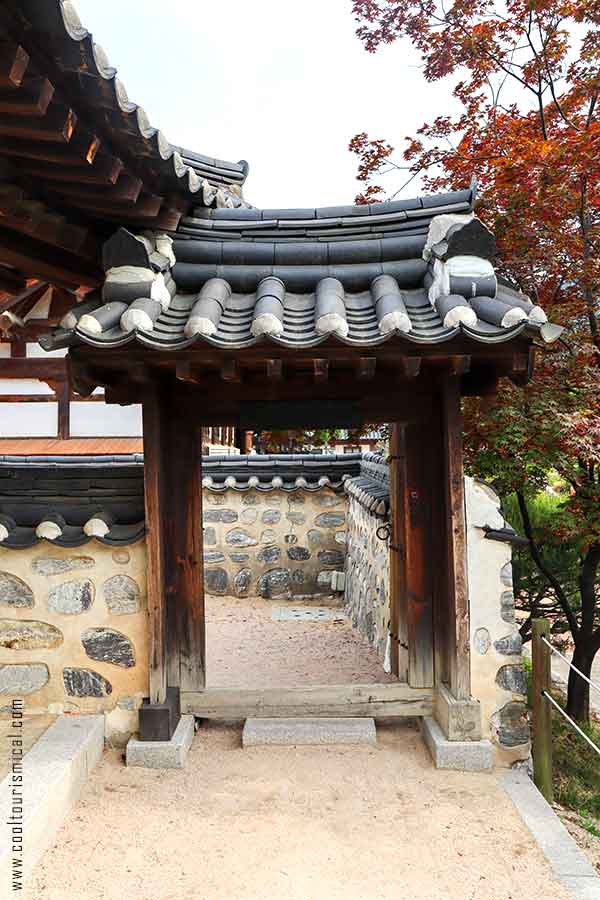
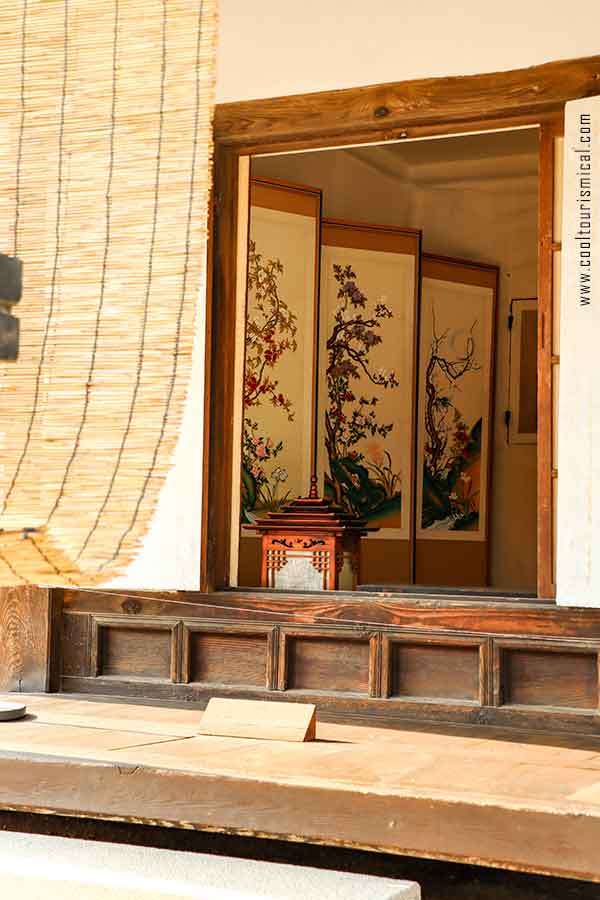
Hanok Entrance & Window, Copyright © Cooltourismical.com
Hanoks are really special homes mostly due of their architectural ingenuity, with a significant spiritual and philosophical side, plus a deep respect for both humanity and nature. Their appearance and layout follows Confucianist principles: harmony with nature, simplicity, simplicity, importance of family and community, respect for elders (spaces are arranged hierarchically), and functionality.
Some of the important characteristics and key architectural elements of a Hanok:
- Ondol Heating System (for cold season): the traditional floor-heating systems using heat from wood fire to warm up the stone slabs under the floor, and eventually the rooms.
- Curved Giwa Roofing: those lovely roofs we see in so many pictures all over the internet. They were used for aristocracy homes in the Joseon era and their purpose was not only to make the house look pretty and elegant, but also to facilitate drainage and offer resistance against wind and snow.
- Wooden Structure: The framework of a Hanok is typically made of wood, reflecting the Koreans choice for natural materials.
- Paper Windows (Hanji): Windows and doors are often covered with “hanji,” which is a traditional Korean paper made from mulberry trees. It is breathable and it allows natural light to diffuse into the house while providing privacy.
- Courtyard (Madang): a central open space that leads to rooms, often used for family gatherings.
- Direction and Location: Follow principles of feng shui (known as “pungsu” in Korean) to ensure harmony with the surrounding environment. A Hanok is traditionally positioned with its back to a mountain and facing water, optimizing both the view and the house’s protection from harsh weather.
Hanok types
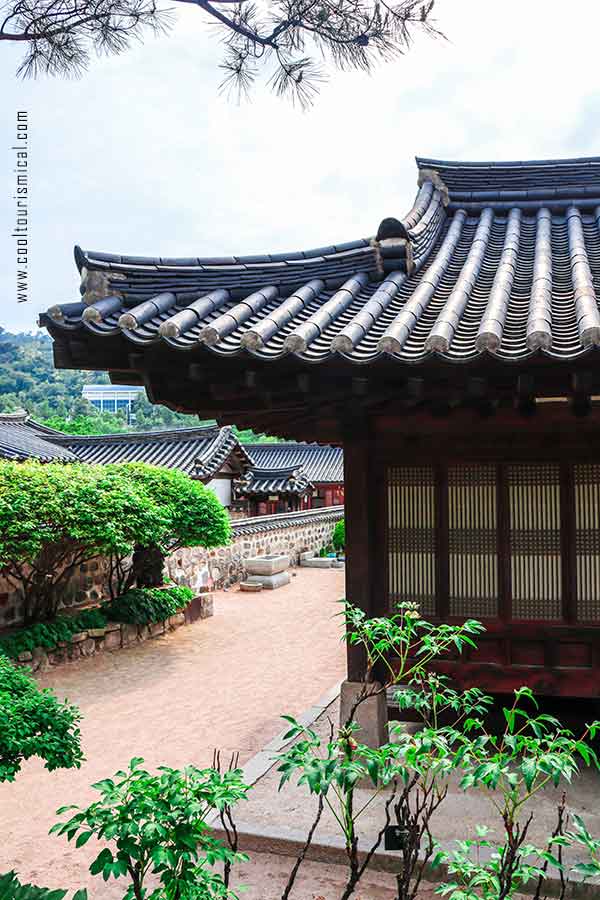
Yangban Class Hanok, Copyright © Cooltourismical.com
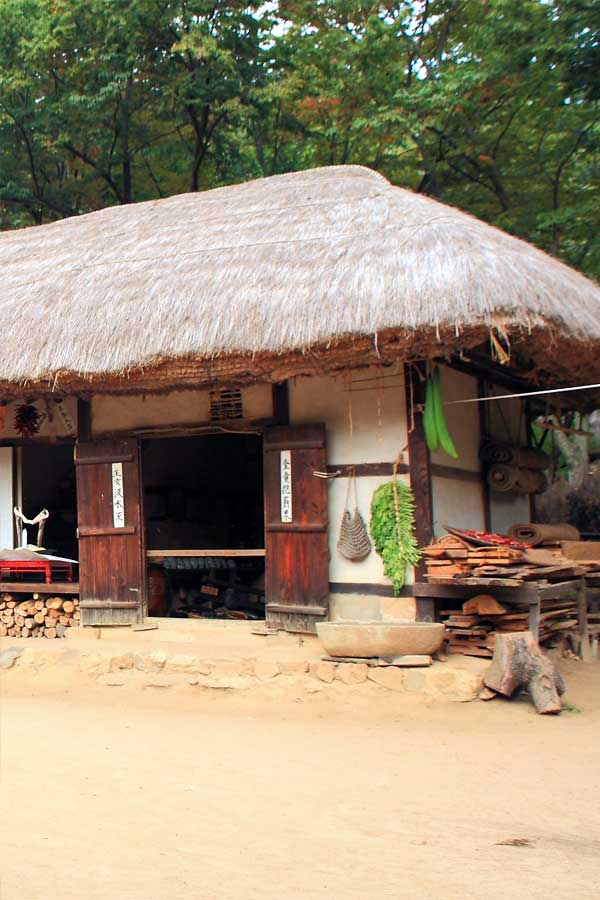
Choga Hanok, Copyright © Dae Jeung Kim | PIXABAY
The Joseons used to build two main types of houses:
- for nobility (Yangban class). The upper class had mainly Giwajip homes, the elegant tiled roof houses, with large living spaces and interior landscaped courtyards and gardens. Today, the type of Hanok with roofs made of baked clay tiles (giwa) is more likely to be found in the central and northern regions of Korea, including urban areas.
- and for commoners. Commoners, including farmers and artisans, were usually living inside a Chogajip house. These houses were much more modest and built with more affordable and accessible materials. What made them clearly different was their thatched roof, from straw or reeds. Chogajip are still commonly kept in rural areas, particularly in the southern parts of Korea.
Still, both types of homes were being built sharing the same core Korean architecture principles, including wooden structures, paper windows (hanji), and a central courtyard (madang), reflecting the cultural values and environmental considerations of traditional living.
The Art & Culture of a Hanok Village
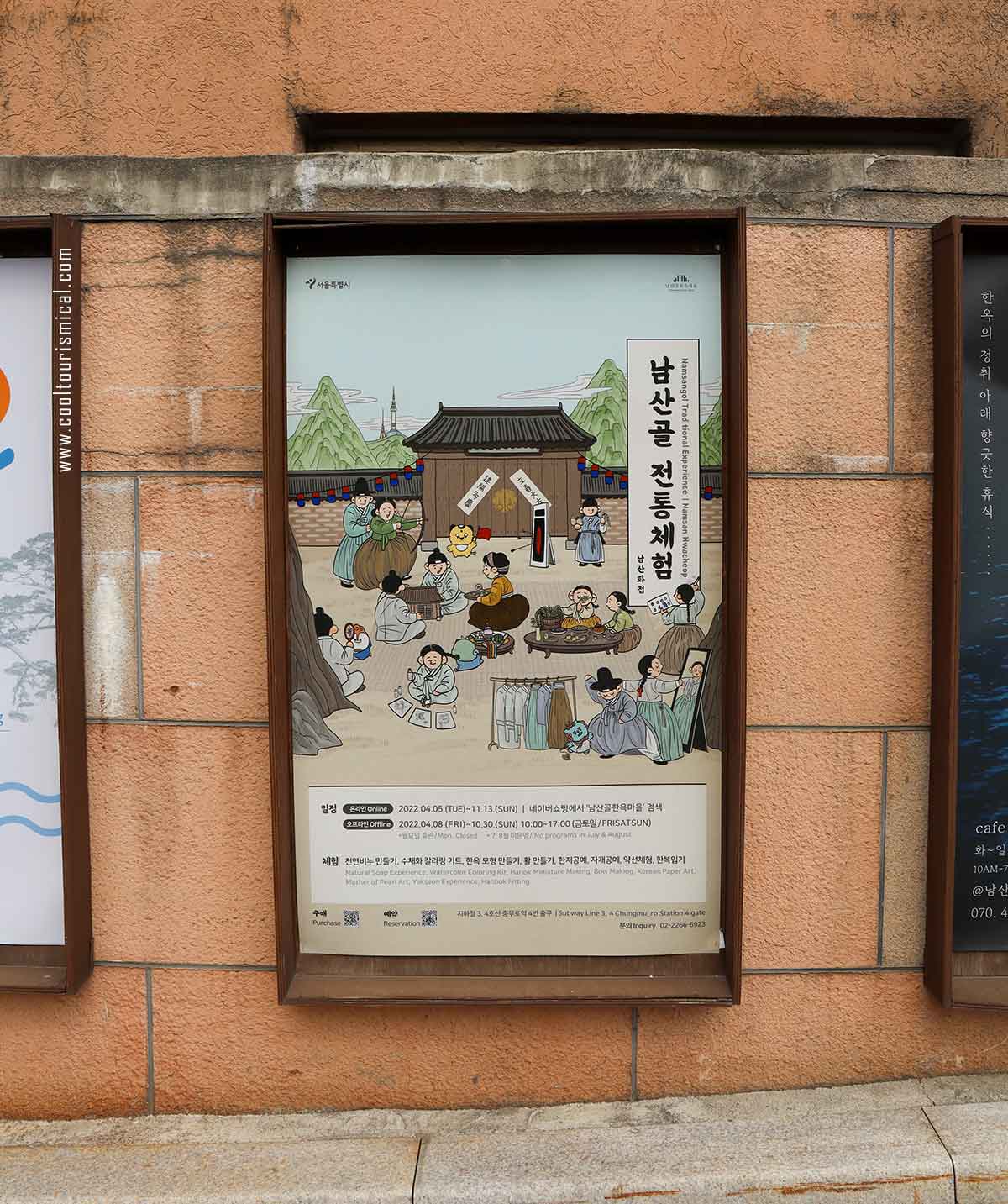
Traditional Korean Activities Poster at Namsangol Hanok Village, Copyright © Cooltourismical.com
Hanok villages are not only a window to the past construction methods, but an overall cultural experience. They have art galleries, and from time to time are animated by traditional festivals.
Most of the days, artisans can be seen in open workshops throughout hanok villages, practicing crafts used for decorating Korean homes and lives for centuries—embroidery, knot making, pottery, wood sculpting, fabric weaving and painting, tea ceremonies and calligraphy, each a small, precious piece of cultural heritage. And you can participate for a small fee.
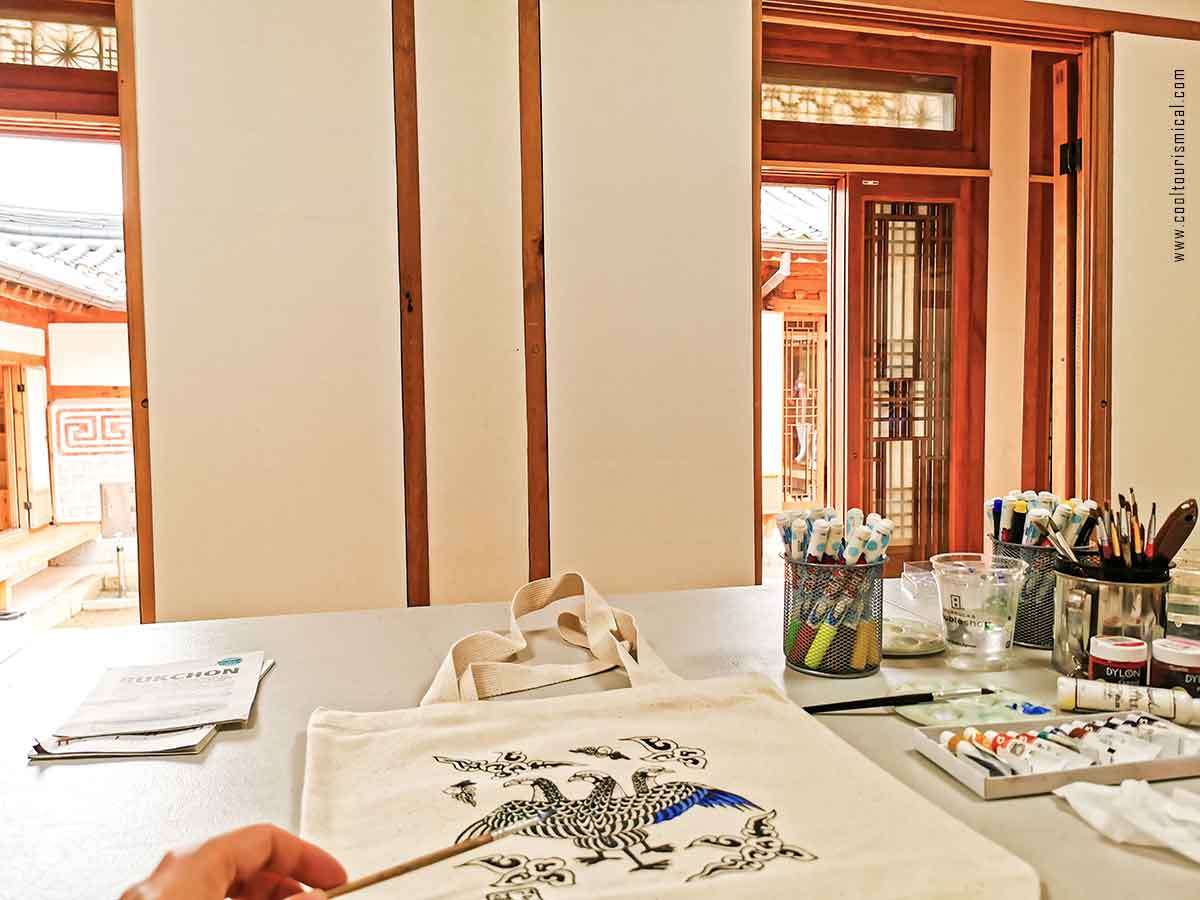
Painting Workshop in Bukchon, Copyright © Cooltourismical.com
I did it myself. I spent roughly 2 hours painting a tote bag with a three-headed hawk at the Bukchon Traditional Crafts Center. The unusual hawk is like a talisman (samjaebu) thought to protect against three major disasters: war, smallpox, and famine, or catastrophes related to water, fire, and wind. Really lovely experience!
📌 Workshop: Making Stone Magnets in Bukchon Hanok Village
 Popular Hanok Villages in Korea
Popular Hanok Villages in Korea
South Korea has a large number of such hanok villages, renowned for preserving traditional Korean architecture and culture. Some of them are living communities where people still reside after hundreds of years, while others are set up more like museums or theme parks for educational purposes.
So, here we go.
📌 Bukchon Hanok Village (Seoul)
- 🎟️ Recommended Activities: Pedicab Tour | Bukchon Walking Tour | Rent a Hanbok
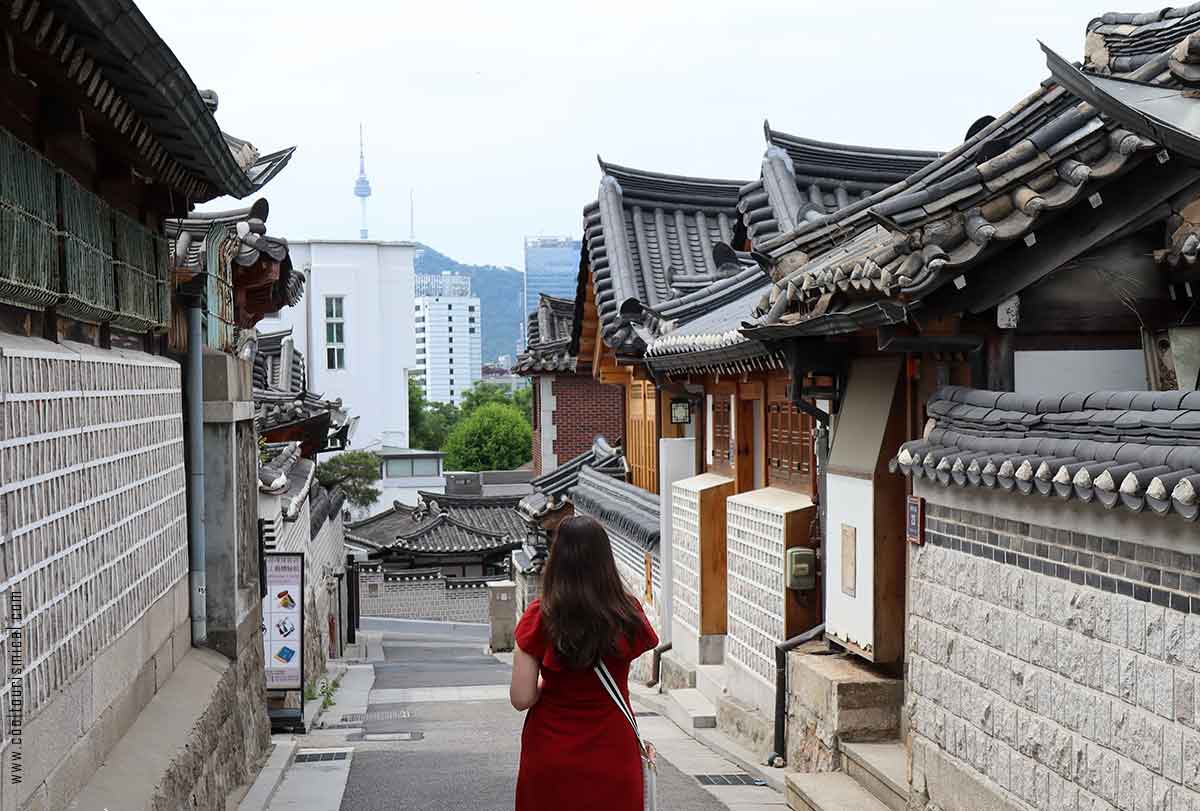
Bukchon Hanok Village Seoul Streets, Copyright © Cooltourismical.com
Located between Gyeongbokgung and Changdeokgung palaces, Bukchon, once an aristocracy-inhabited area, is nowadays a Seoul neighbourhood with a large concentration of well-preserved Hanok homes, and not actually a village on its own. Some of the old houses keep the Joseon-dynasty feeling, while others have been modernized and upgraded to fusion hanoks.
It’s probably one of the most famous in South Korea and an extremely popular tourist destination, with a mix of residences, tea houses, and cultural centers. A must-do on any list of activities for a trip to Seoul!
- 💡 If you’re planning to visit, you can read more here: What to do in Bukchon Hanok Village.
📌 Seochon Hanok Village (Seoul)
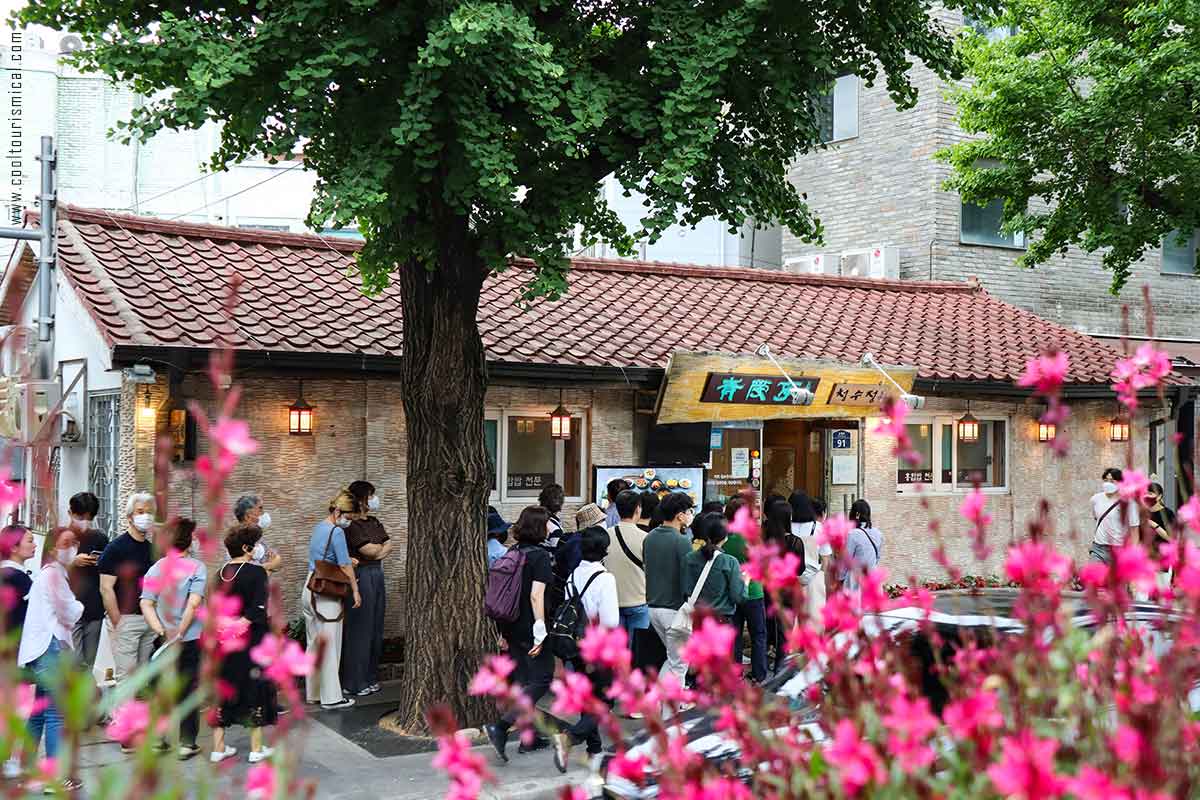
Traditional Restaurant, Copyright © Cooltourismical.com
“Seochon” literally means “west village” as it’s situated, not far from Bukchon, to the west of Gyeongbokgung Palace. This area is also known for its well-preserved hanok houses, mixed with modern homes, as well as many art galleries and cafes.
And, at least in my opinion, it is better developed in terms of restaurants. But be ready to wait in a long cue to enter, even for 30-40 minutes sometimes, especially during lunch hours.
📌 Namsangol Hanok Village (Seoul)
- 🎟️ Recommended Tour: Seoul Sightseeing Tour including Namsangol Village
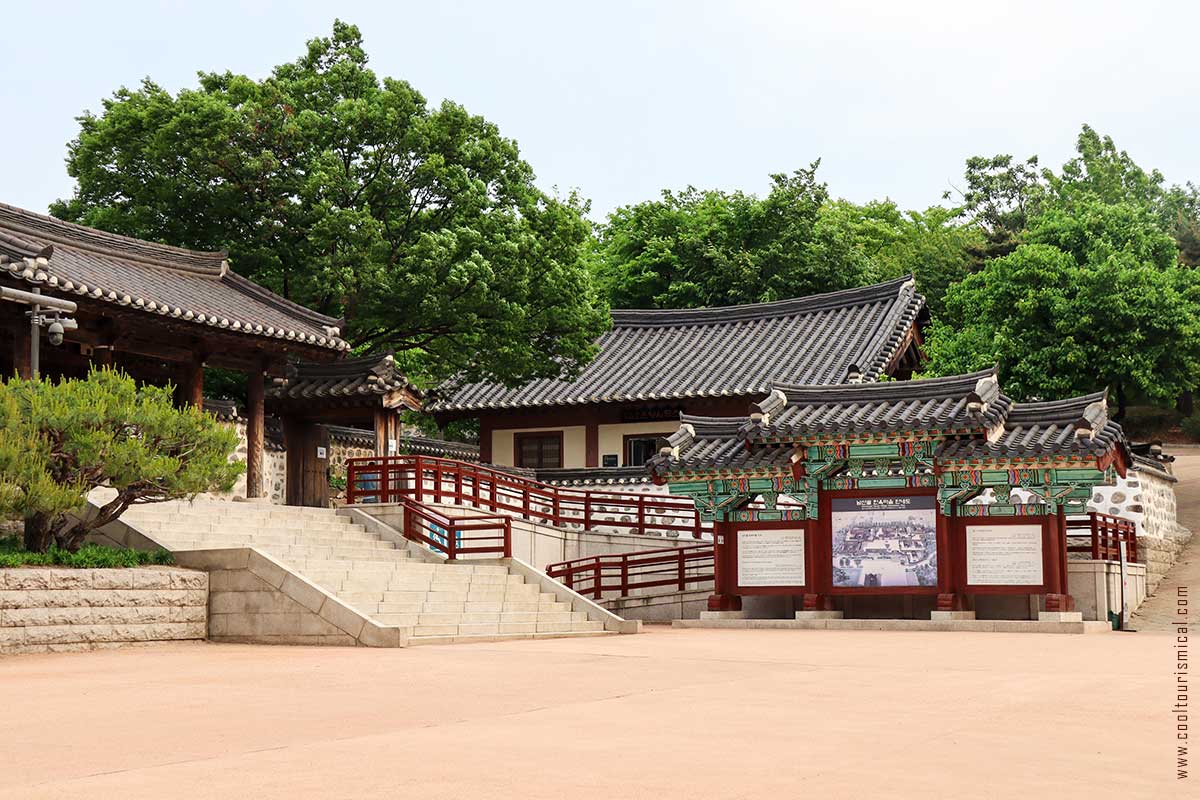
Namsangol Village Entrance, Seoul, Copyright © Cooltourismical.com
Standing at the feet of Namsan Mountain, Namsangol is actually an open-air museum where five Hanoks from the Joseon Dynasty were relocated and restored. The houses used to belong to people with different social backgrounds, ranging from a humble carpenter to important military figures.
Besides the few buildings, the village, which is pretty small, has also a traditional garden and pond. Plus, a quaint café with yummy cakes and milkshakes, tea and more.
In weekends, the whole place becomes a hub for cultural activities. You can play games like archery, join cultural workshops, and enjoy performances of traditional Korean plays, dances, and music.
📌 Songdo Hanok Village (Incheon)
In contrast to the many other folk villages, Songdo is a modern hanok complex built approximately 10 years ago. Songdo’s skyscrapers and the traditional architecture meet. Although it was originally imagined as a cultural experience space, it now houses commercial spaces like hotels, restaurants, and cafes within its hanok structures. The site is also a popular drama filming location.
Address: 180, Techno park-ro, Yeonsu-gu, Incheon
📌 Jeonju Hanok Village (Jeonju)
- 🎟️ Recommended Tour: Seoul to Jeonju Day Trip
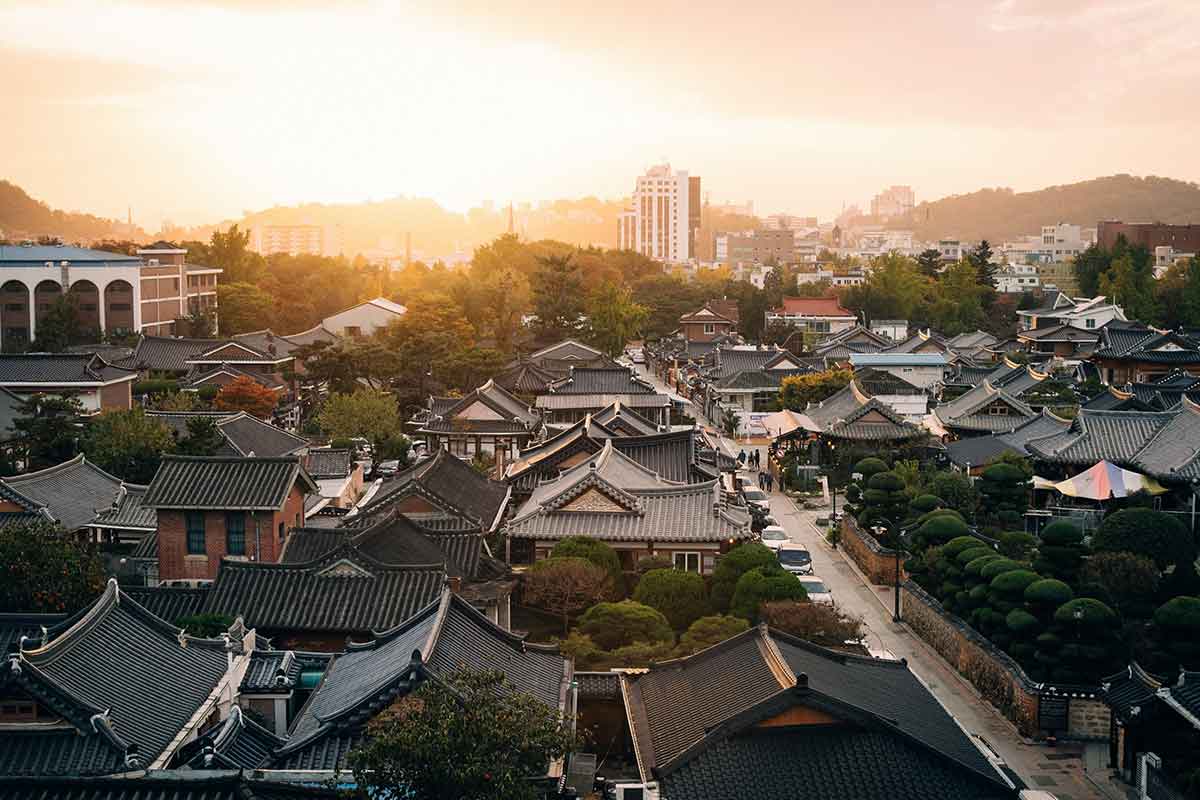
Jeonju, Copyright © Rawkkim | UNSPLASH
Jeonju, home to one of the most expansive Hanok villages in South Korea, exhibits more than 800 traditional Korean homes, scattered centuries-old temples, and artisan studios. Nestled in the south-western part of the country, this particular hanok village is a cultural enclave with vibrant craftsman markets, calligraphy workshops, and sake museums. And some AMAZING street food, especially bibimbap, which is believed to have originated, right here, in Jeonju.
If you’re in Seoul, you can easily go on a guided tour / day trip to Jeonju.
📌 Andong Hahoe Folk Village (Andong)
- 🎟️ Recommended Andong Tour: From Busan | From Seoul
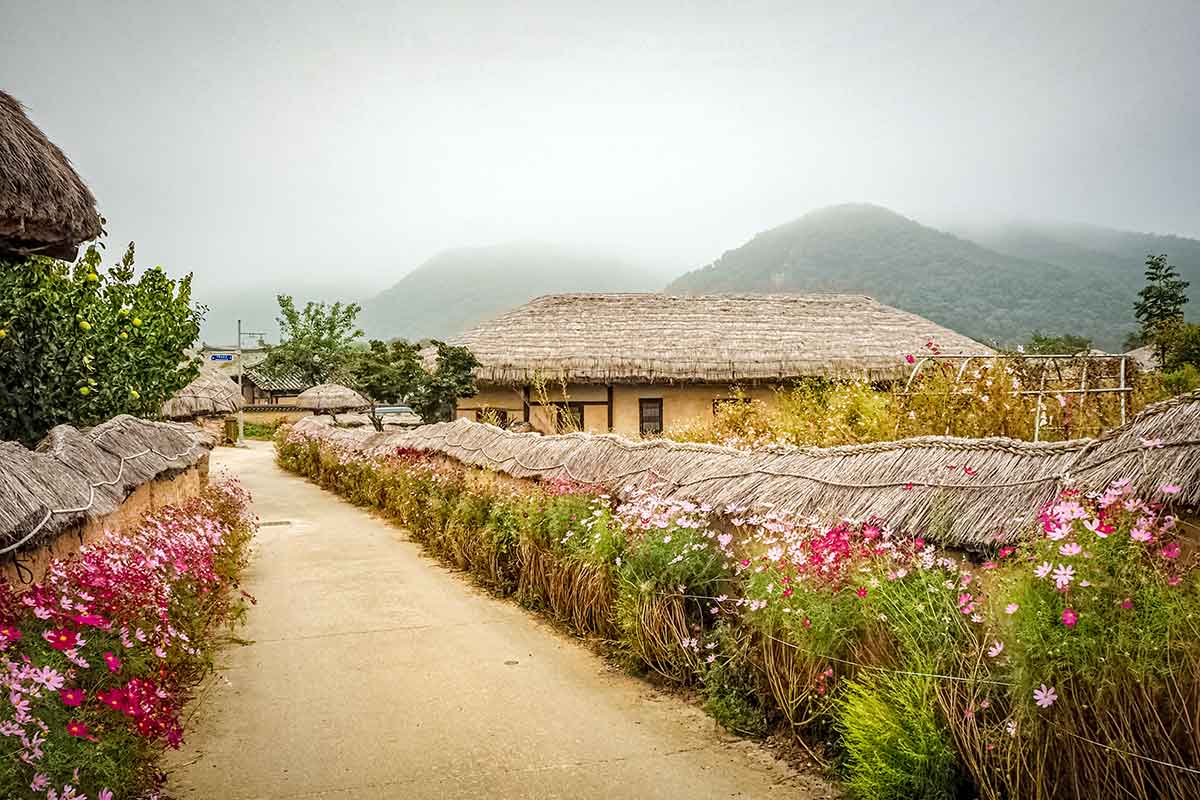
Hahoe Folk Village, Copyright © Greysha | FREEPIK
One of the most beautiful historic settlements in Korea, as well as a A UNESCO World Heritage site, Hahoe Village near Andong is famous for its traditional mask dance drama. It was visited by both former President Bush of the United States and Queen Elizabeth of England.
A characteristic of Hahoe are the Choga-type houses, thatched-roof homes, surrounded by nature, and once popular among farmers. The houses have been maintained by the same families for generations.
📌 Nagan Eupseong Folk Village (Suncheon)
This village is a UNESCO World Heritage site with a well-preserved, Joseon-era fortress and over 100 intact ancient houses, administrative buildings, and facilities within its walls.. It’s a living museum where people still reside and conduct their daily activities.
Address: 순천 낙안읍성, 6-4 Pyeongchon-ri, Nagan-myeon, Suncheon-si, Jeollanam-do, South Korea
📌 Gimhae Gaya Theme Park (Gimhae)
It’s a very local theme park near Busan, offering a combination of outdoor adventures, ancient crafts classes and historic exhibitions, all a time capsule for Korea’s ancient Gaya kingdom.
The hanok village section follows the journey of Queen Heo who came to Gaya from Ayuta, India and exhibits reproductions of clothes and jewellery of the Gaya era. Outside, the scenic King’s Pond spreads beauty year-round. It’s a lovely place with lots of Instagramable spots and just right for family walks. Found also a presentation video here.
Address: 161, Gayatema-gil, Gimhae-si, Gyeongsangnam-do(경남 김해시 가야테마길 161), close to Busan
📌 Korean Folk Village (Yongin)
- 🎟️ Recommended Tour: Korea Folk Village / Suwon Hwaseong Day Tour from Seoul
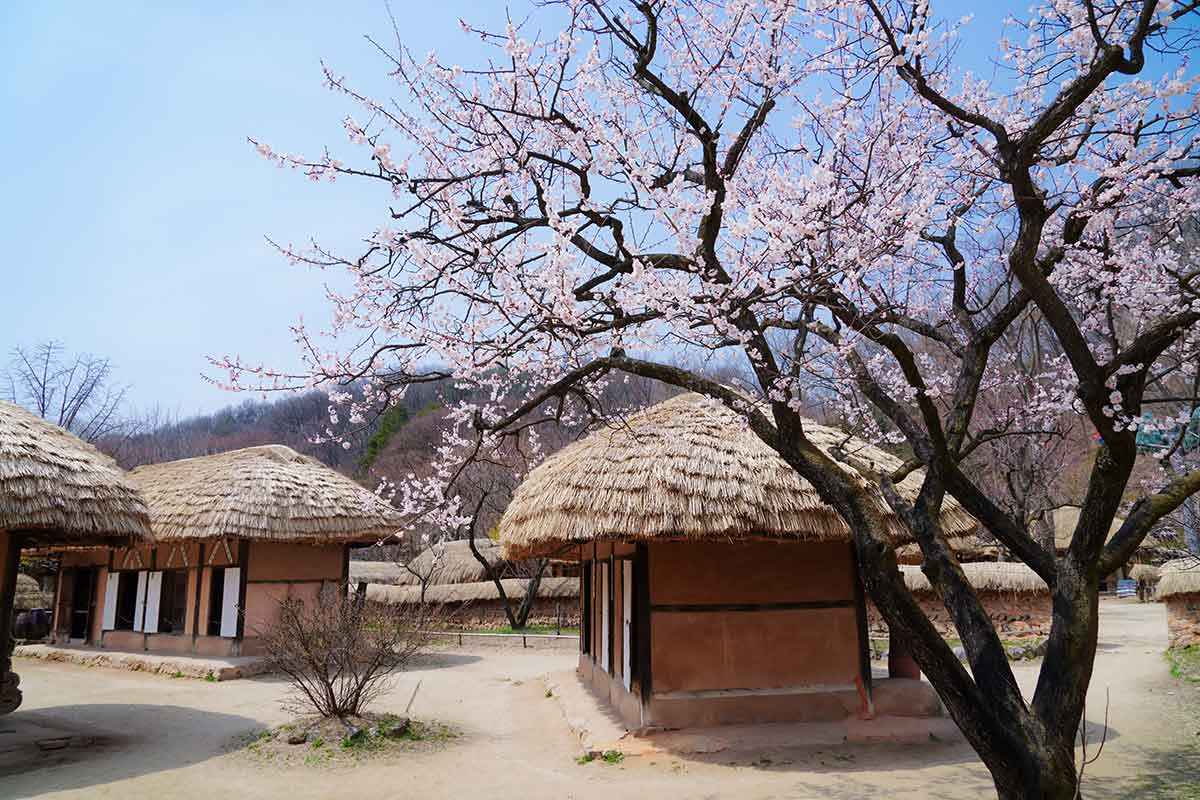
Korea Folk Village, Copyright © Dae Jeung Kim | PIXABAY
Rather than a living village, this is more like an open-air museum and amusement park in Yongin, a satellite city in the Seoul’s Metropolitan Area. It was open in the 70’s and it’s the ideal place to start any Korea trip, as you can learn a lot about country’s history during the Joseon Dynasty. Unlike others, this village does have an entrance fee. But it’s totally worth!
The charming hanoks, the restaurants, the workshops practising the ancient Korean arts such as embroidery and basket making, people wearing hanboks, the dance performances, makes it feel like a legit Korean drama setting. In fact, it’s The Mecca of Historical Drama as it served as a shooting location for “The King’s Affection (2021), Tale of the Nine Tailed (2020), The Crowned Clown (2019), 100 Days My Prince (2018)” and many many others (Source).
The ticket package below, with shuttle included, is quite a good option if you don’t have a car. Yongin is pretty far by subway (2 hours), compared to a 30 minutes drive.
Address: 한국민속촌, 90 Minsokchon-ro, Giheung-gu, Yongin-si, Gyeonggi-do, South Korea
📌 Oeam Folk Village (Asan)
Oeam Village in Chungcheongnam-do is one of the most typical Korean rural towns and has housed the Yi family from Yean for over 500 years. Less than 200 people live here today, surrounded by mountains. But their settlements still reflect the profound influence of Confucianism, a philosophy which reshaped many settlements during the Joseon era.
The houses in this region often consist of two L-shaped buildings facing each other, framing a central courtyard. But the most special characteristic of Oeam Village is its artificial waterway system from a natural stream, created for both practical and spiritual reasons: to protect the village from the fire spirit of Mt. Seolhwasan and to provide to nearly every home enough water supply for daily needs, gardens nurturing, and fire prevention.
Construction technique involving thatched roofs and round-stone walls have been handed down by tradition, along with various rituals and offerings, as well as specific foods such as lotus-leaf liquor and rice pancake (buggumi) which seemed to be unique to the village.
There is fee for visiting.
Address: 13-2, Oeamminsok-gil 9beon-gil, Asan-si, Chungcheongnam-do, 충청남도 아산시 송악면 외암민속길9번길 13-2
📌 Gyochon Traditional Village (Gyeongju)
- 🎟️ Recommended Gyochon Tour: From Busan | From Seoul
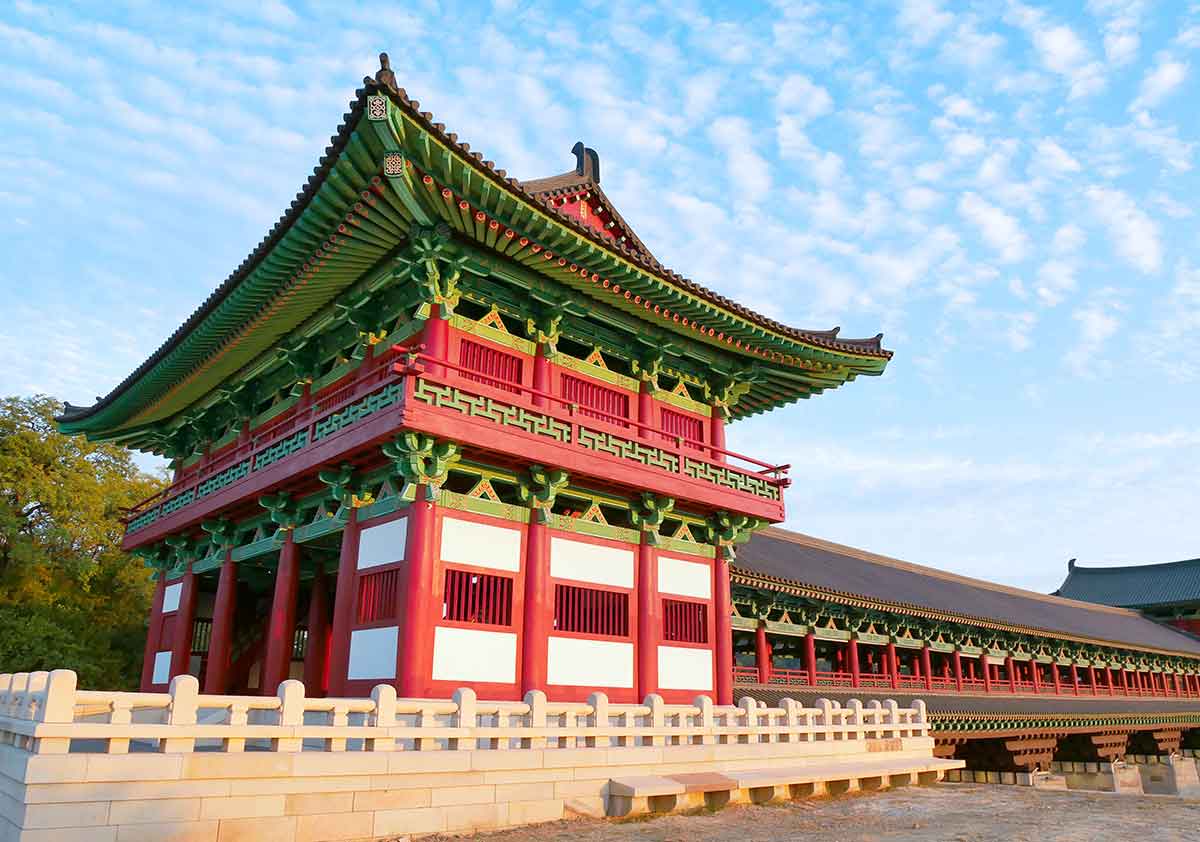
Gyeongju, Copyright © nunawwoofy | FREEPIK
Gyeongju Gyochon Village is another historical treasure, but located more to the South-Eastern part of South Korea, offering visitors a glimpse into the traditional lives of the Choi clan for over five centuries. Gyeongju used to be the ancient capital of the Silla Dynasty and the village retains its original charm with well-preserved hanok structures.
Famous for: tea ceremonies and Gyodong Beopju Distillery, manufacturing a traditional liquor.
📌 Seongeup Folk Village (Jeju Island)
- 🎟️ Recommended Tour: Eastern Jeju Island Day Tour
It’s a small, 15th century Korean town that holds a vast amount of Jeju’s unique traditions and cultures, and visitors can explore traditional Jeju-style Hanok houses and a fortress. The houses were built with local materials, thatch and lava rocks, and following the Confucianism principles.
The village has a Cultural Heritage Center where you can learn how to perform songs on ancient instruments, cook rice cake or brew Gosori liquor and bnbs that offer overnight stays.
Address: 19, Seongeupjeonguihyeon-ro, Seogwipo-si, Jeju-do 제주특별자치도 서귀포시 표선면 성읍정의현로 19
📌 Seochang Folk Village (Gwangju)
Seochang Folk Village, once named “Sedong Village” in honor of General Kim Se-geun from the Righteous Army during the 1592 Japanese Invasion of Korea, stands beautifully between Baengmasan Mountain and the winding Geungnakgang River.
Established during the mid-Joseon Dynasty, it originally featured an array of traditional Korean hanok homes. By the 2000s, it transformed into a visitor-friendly destination, showcasing countryside farm traditions. Additionally, the village is celebrated for hosting the annual Mandeuri Harvesting Ritual.
📌 Gaepyeong Hanok Village (Hamyang)
Gaepyeong Hanok Village, located in the southern part of Jirisan National Park, is a quiet, less touristy aristocratic clan village with around 60 well-preserved traditional Korean houses dating back to the Goryeo Dynasty.
The village, immersed in natural beauty with mountains, pine forests, and local temples, is well known for its historical homes of Confucian scholars and soju. Although there hasn’t been said to much about it in English, the village has been a backdrop for numerous Korean TV dramas and shows.
Address: 35-9 Gaepyeong-gil, Jigok-myeon, Hamyang-gun, Gyeongsangnam-do, South Korea
📌 Hanok Villages Map
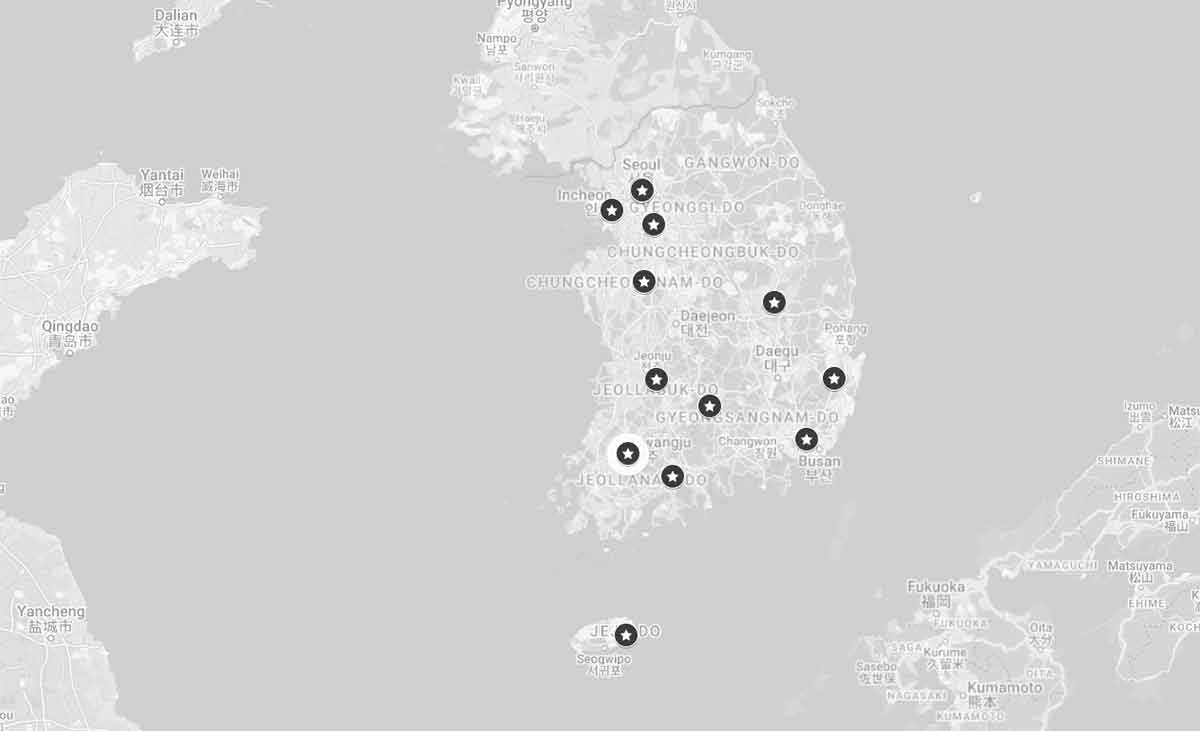
 Tips for Visiting a Korean Hanok Village
Tips for Visiting a Korean Hanok Village
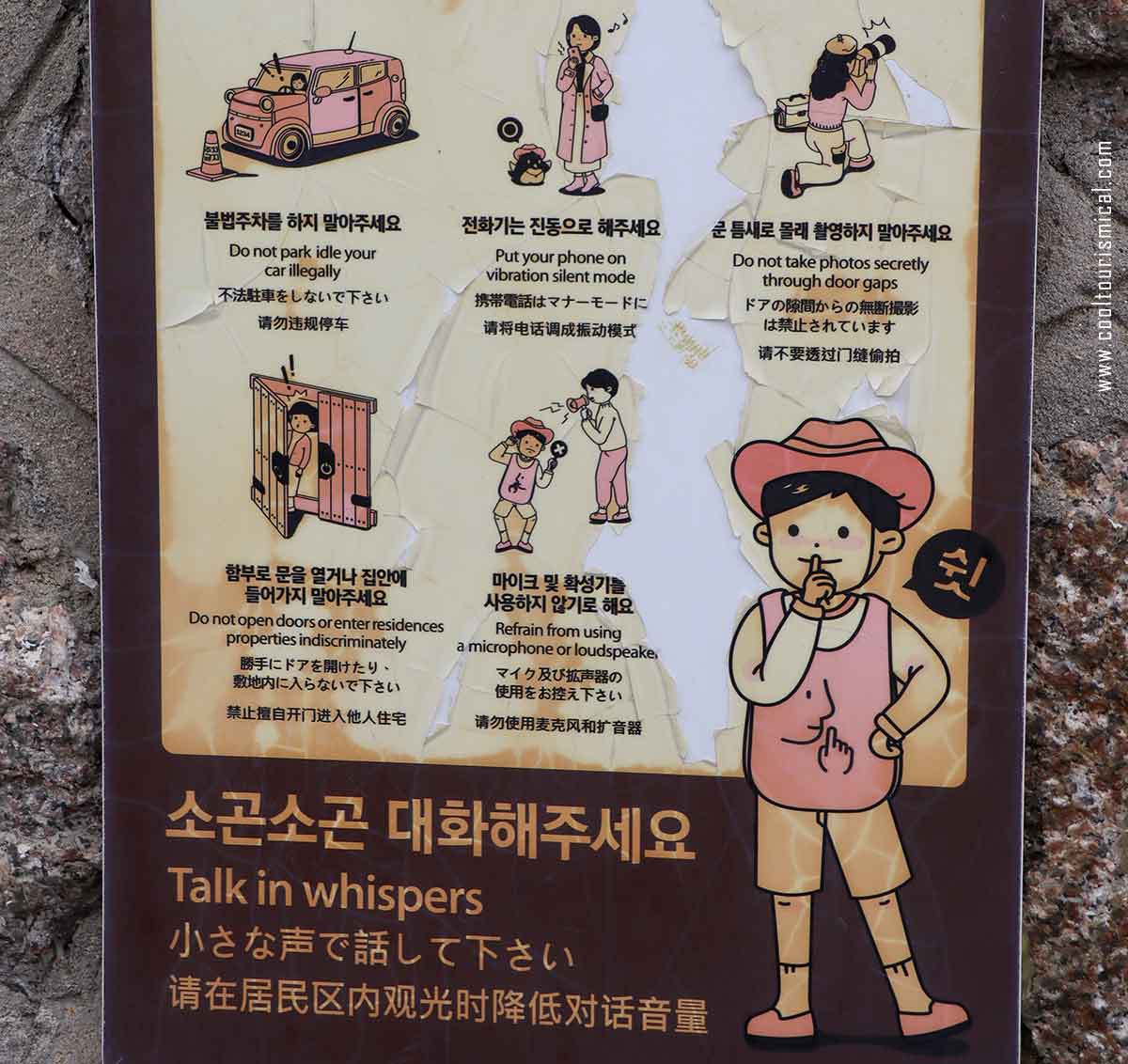
Hanok Village Guidance Panel, Copyright © Cooltourismical.com
Just a small list of things to know before you actually go visiting a traditional Korean community.
📌 Respect the Residents
Remember that many Hanoks are still private residences! Always respect their privacy, keep noise levels down, and avoid trespassing into private properties. Another piece of advice is to be mindful of photography. While it’s tempting to capture the beauty of the Korean traditional architecture or interior design, always be considerate. Avoid taking photos inside private homes, even if doors are open, unless given permission.
📌 Wear Comfortable Shoes
Hanok villages often have stone-paved paths. Wearing comfortable footwear will help you explore the area much easier. And longer.
📌 Spend a Night in a Hanok
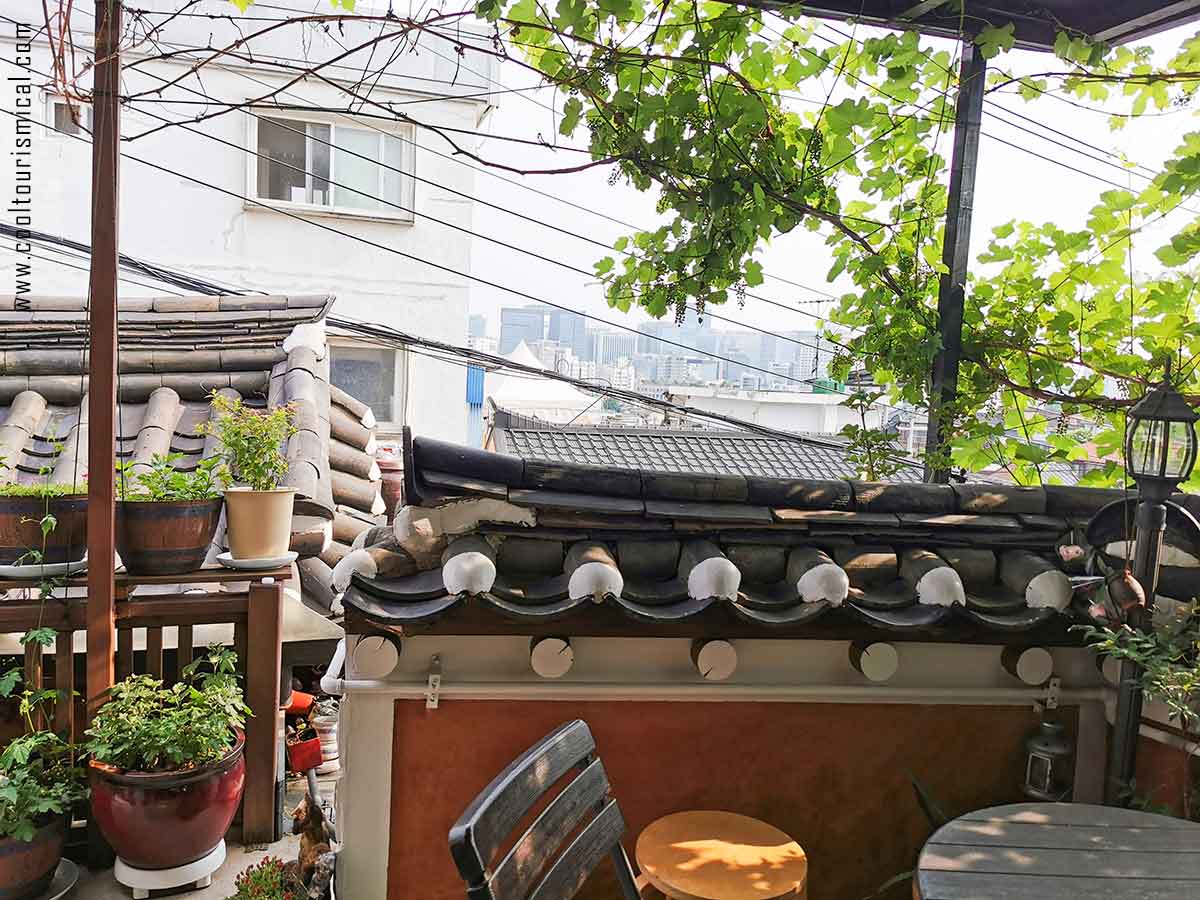
Korean Homestay Garden, Copyright © Cooltourismical.com
Nothing offers a more immersive experience of the true essence of Hanok living than staying in a guesthouse or ‘Hanokstay’. It gives you an authentic feel of traditional Korean life, especially the unique experience of sleeping on an ondol-heated floor (if it’s winter outside, obviously!). There are some absolutely beautiful Hanok stays all over Korea. My favorite ones, below.
The Hanok (Jeonju)
Gorgeous traditional hanok house in Jeonju. Right the heart of the Hanok Village, on a quiet alley, but close to all cultural points of interest. Large and comfy rooms. Excellent English. .
4.5 out of 5⭐ | Location: 68-15, Eunhaeng-ro, Wansan-gu, Jeonju
Hanok Guesthouse Suni (Seoul)
One of the most beautiful stays in Seoul, typically Korean. Antique furniture, an intimate lovely interior courtyard, a bit out of the center, but close to metro, in a shopping area.
4.5 out of 5⭐ | Location: 42, Bomun-ro 32-gil, Seongbuk-gu, 02849 Seoul, South Korea
Bukchonmaru Guesthouse (Seoul)
An old hanok right in the heart of Bukchon Hanok Village. Literally set where the whole action takes place, among old restaurants, art galleries, on one of the magical winding streets near Changgyeonggung Palace.
4.5 out of 5⭐ | Location: 152 Changdeokgung-gil, Jongno-gu, Seoul, South Korea
Okyeon Jeongsa (Andong)
400-year old rooms in a countryside complex in Andong which once served as the house of a prime minister. Amazing location, in the middle of the nature, in a historical building, with comfortable futons.
4.7 out of 5⭐| Location: 86, Gwangdeoksolbat-gil, Pungcheon-myeon, Andong, South Korea
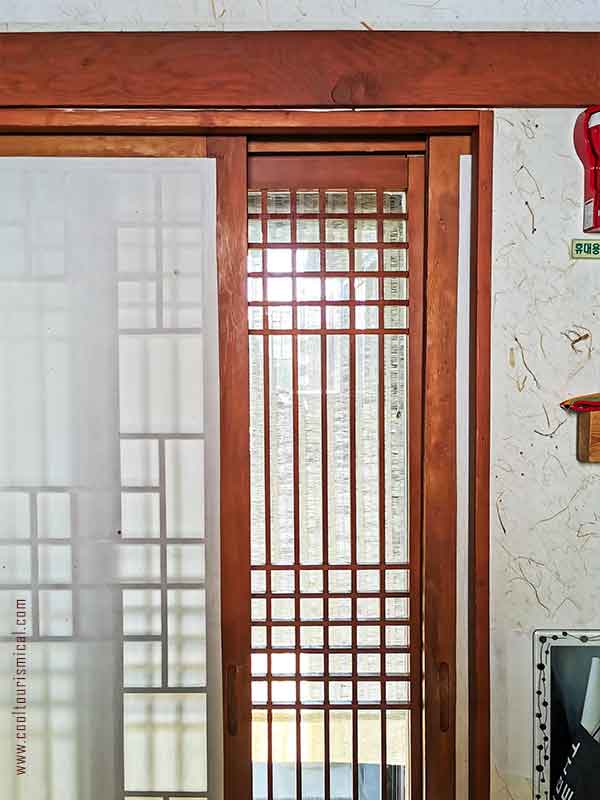
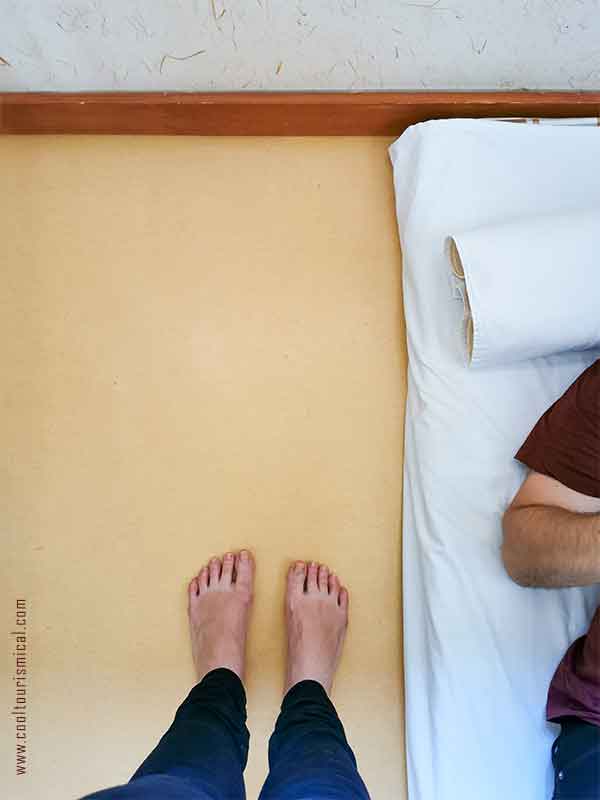
Bukchonmaru Guesthouse, Copyright © Cooltourismical.com
While in Seoul, I had a great 2-day stay at Bukchon Maru and I couldn’t recommend them more.
A sturdy stone wall and a beautifully crafted wooden door hide behind them a peaceful heaven with an interior garden and a staircase that leads to tiny traditional rooms grouped around a madang. Masks and painting decorate the space, sleeping is done on a traditional floor mattress, put directly on the ondol, and light comes in through paper blinds. Magical!
📌 Dress up like a historic Korean drama character
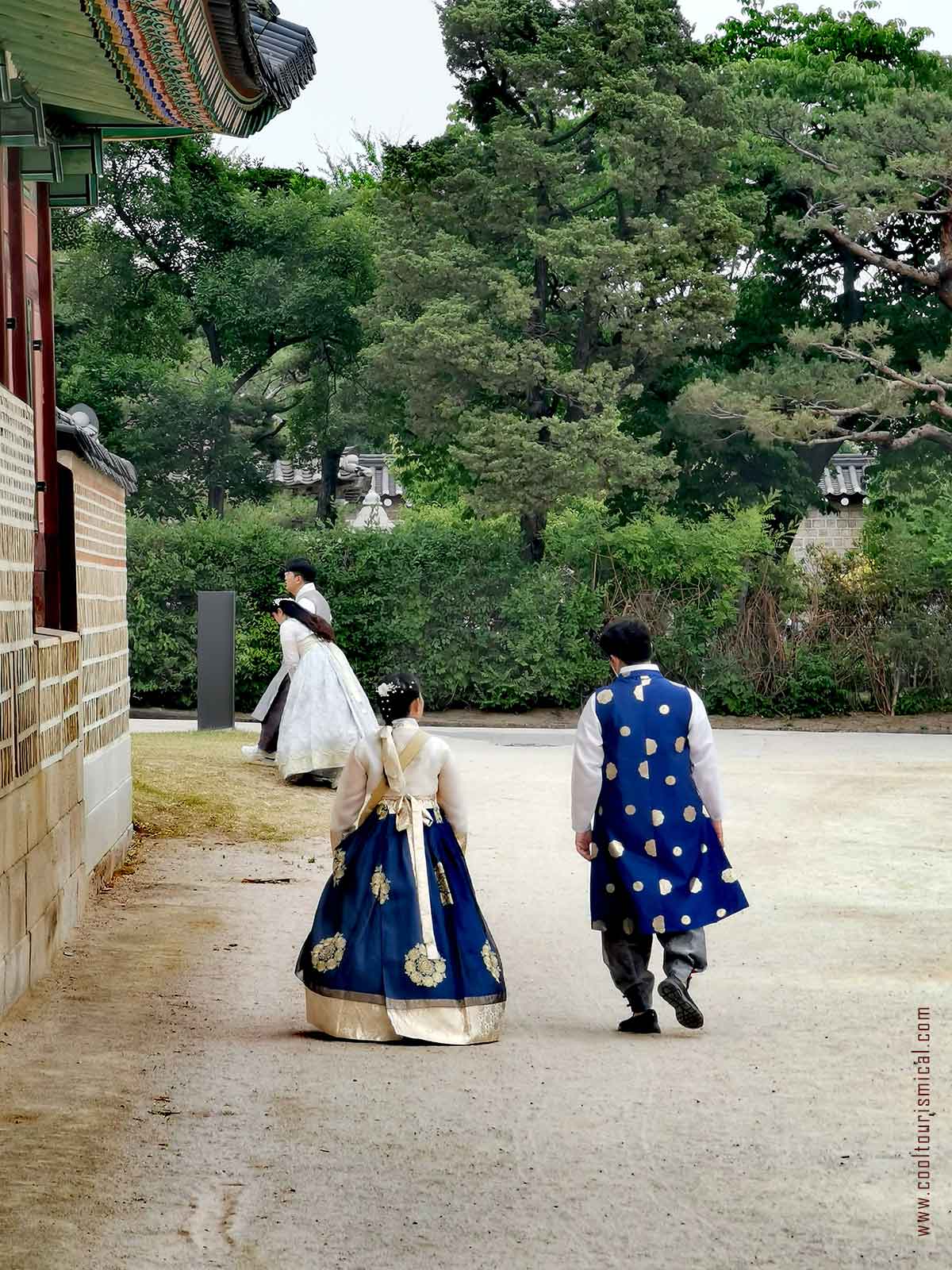
Koreans Wearing Hanbok, Copyright © Cooltourismical.com
In many Hanok Villages you will see many people wearing this fancy, old-style Korean clothing. And no, they are not actors!
They are visitors, just like everyone else, but getting into the spirit of the Joseon times by having rented a Hanbok, the traditional attire. It’s really popular, and affordable, and you should not miss out the opportunity to take some Instagram-worthy pictures.
📌 Visit during Festivals
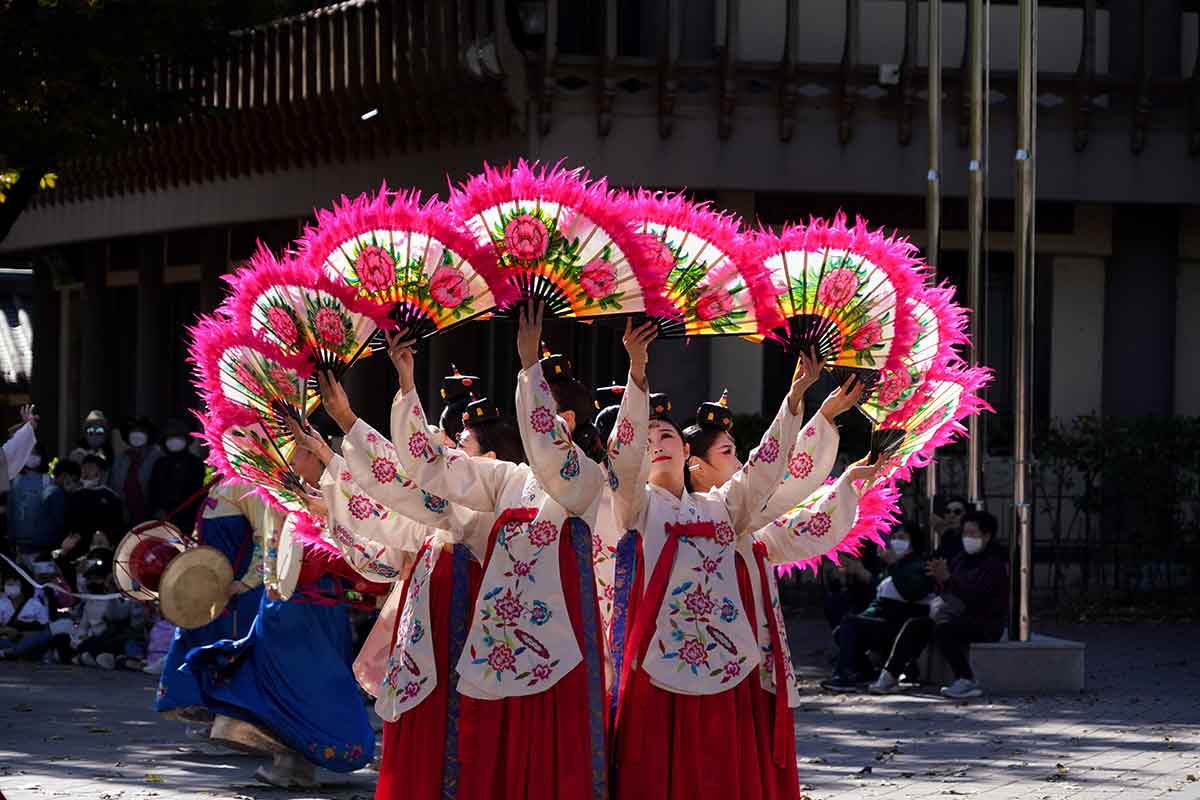
Korea Folk Village Traditional Performance, Copyright © Dae Jeung Kim | PIXABAY
Hanok villages often host these lovely festivals where people decorate the place with lights and art sculptures, and dress up like in the Joseon period, dance, sing, and prepare tastiest local food specialites.
You can check out Jeongwol Daeboreum, The Great Full Moon Festival, honouring the first full moon at the beginning of the year, at Namsangol Hanok Village in Seoul or visit Jeonju Hanok Village during the Plum Blossom Festival in spring (guided tour).
If you plan to go to Jeonju in summer, in July, not far from Jeonju, Buyeo Seodong Lotus Flower Festival is taking place. You can see for yourself the legendary lotus flower, water nymph, blooming at dawn only.
Oeam village, a farming-oriented settlement, has its own themed festivals. Jangseungje and Daeboreum Ceremony, a custom since ancient times to pray for the well-being of the village and a good harvest. People are having fun by writing wishes on paper and hanging it on a jangseung (wooden totem pole), sharing fried puffed rice for the full moon, playing various folk games such as Jegichagi, roasting chestnuts, and raising kites into the sky.
In October, Straw Culture Festival takes place for 3 days, in the same village, to celebrate a Neo-Confucian scholar named Lee Gan who used ‘Oeam’ as his pen name. The whole festival is themed around re-enact moments of his life.
And the list can go on.
📌 Take guided tours
To be honest, I am always lucky enough to make friends in the most unexpected places. In Seoul, a Korean photographer, whom me and my husband met at Jongmyo Shrine, took us to eat together, introduced us to Korean pies and Mageoli, spoke to us about Korean life.
Korea has a very beautiful and fascinating heritage. Even so, sometimes, connecting to local people might be difficult. Most speak little English, they are more conservative and private. And it would certainly be a pity to miss out on the most interesting aspects about their culture. Speaking with a local ALWAYS enriches your experience.
In case you feel shy or don’t manage to easily connect with locals, there are plenty of amazing guided tours, that I already mentioned above for most of the villages.
📌 Buy from local artists or join their workshops
Inside Hanok Villages, you can find so many beautiful souvenirs to take back home. Buying a handmade craft means you’re bringing a bit of Korea’s art history back home with you. These items include pottery, cloth goods, jewelry, and traditional Korean paper (hanji) creations.
They carry with them centuries-old stories and skills handed down from one generation to the next. Buying these helps keep Korea’s unique culture alive and supports the artisans’ way of life.
For example, in Bukchon, there’s a little shop run by an elderly woman who sells her husband’s paintings: images of colorful streets, decorated with flowers, and curvy roofs of the hanoks, in which time seems to have stopped.
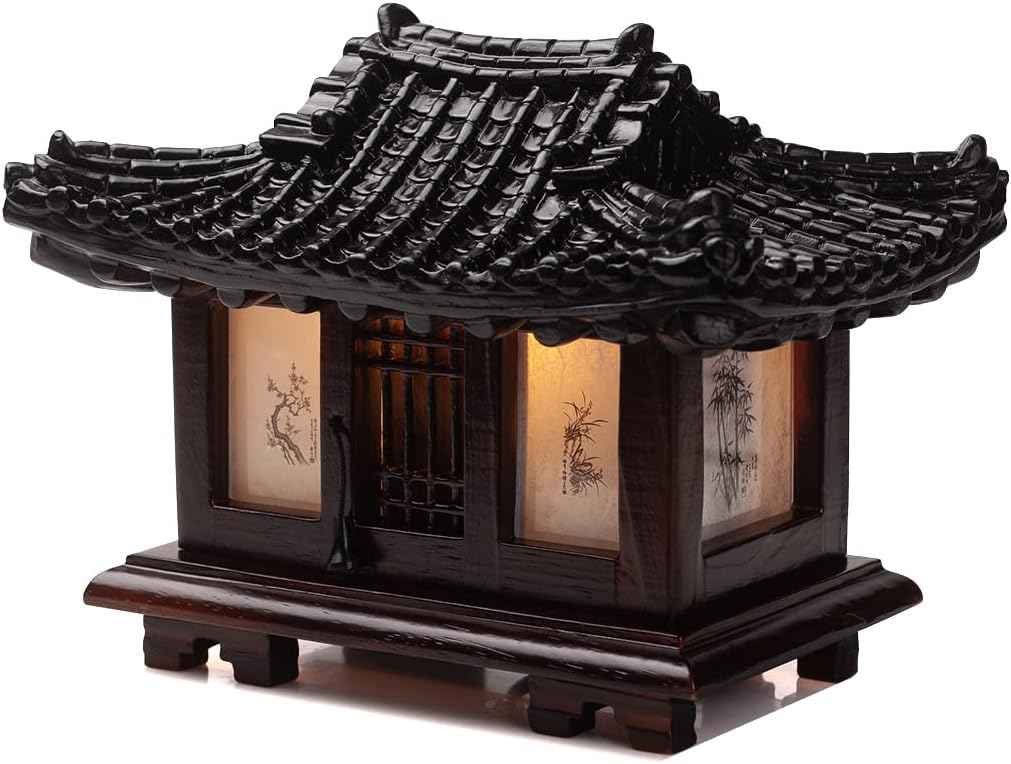
In the image on the left, there is a hanok-shaped lamp, from Antique Alive, a Korean store selling on Amazon amazing Korean crafts coming from master carpenters, potters, bamboo mother of pearl inlaying artists and more. The beauty of these wooden antiques lies in the the grain of wood they are made of. That tiny grain is hundreds of years of meditation and songs, sunlight, earth wind and rain.


